Since the day I joined SEGAbits, one of my goals has always been to shed light and draw attention to some of the more obscure games in SEGA’s history. With 32X month in full swing, it just didn’t seem right to let the month pass without writing some kind of article that sheds light on one of the rarest titles in the system’s small library: Darxide. This is a game that few people have played and even fewer people know how to play, so today I’m not only going to go over the history of the game, I’m also going to explain its mechanics so that if you do ever get to play the game, you’ll know how.
The History
The game was created by Frontier Developments, a British developer founded by David Braben. Our British readers will likely know Braben as the creator of the Elite series, which was the first 3D space trading sim ever made. Our readers might know Frontier by their more recent works, including the LostWinds series for WiiWare, Kinectimals, and the upcoming (an awesome looking) Elite: Dangerous. Darxide was originally conceived as a launch title for the SEGA Neptune, a new Genesis revision that would have included built-in 32X hardware. Though the system was ultimately canceled, Darxide somehow saw the light of day in a limited print run exclusively in the PAL territories.
Darxide is notable for a couple of reasons. For one, it is the only PAL exclusive 32X game to feature region locking, making it impossible to play on stock American hardware (though there are multiple ways around that, some of which will be detailed later). Darxide is also one of the only “second generation” 32X games. Most of the 32X’s library was released less than a year after the hardware hit store shelves, meaning that few of these games were able to take the time to exploit its capabilities. Darxide was one of only a few games to be released in the 32X’s second year of life and it definitely shows. Darxide is easily the most visually impressive game on the add-on, being one of only two games on the system to utilize texture mapping and the only one of those games to also utilize basic lighting. Frontier Developments goes so far as to compare the 32X favorably to the Saturn:
“It is one of the few games on the 32X to do texture mapping, and as such looks better than many games for the machine SEGA chose to push instead of the 32X, the Saturn. This is because we were able to get software rendered textures at a higher rate on the 32X than the hardware could manage on the Saturn.”
These graphics do come at the cost of frame rate, unfortunately, as the game displays significant slowdown as it becomes filled with 3D objects. Regardless, Darxide is a fleeting glimpse into what could have been for the 32X had it not died so young. Darxide was eventually followed up by a 2003 sequel called “Darxide EMP” for Pocket PC and Nokia Series 60 phones.
An unfortunate side effect of its rarity is that very few people have played Darxide on actual hardware and even fewer have an authentic, complete copy of the game. In every review I’ve found the writer has admitted to using an emulator, and almost no one on the internet has been able to figure out how the game works. I can’t blame them either: the game has no tutorial to speak of, so anyone jumping into this game through an emulator or flash cartridge will have no idea what the hell they’re doing. Darxide is a game that expects you to read the manual to understand its more complicated mechanics and HUD, so without it you are effectively, pardon the pun, flying blind.
The Misconceptions
Despite what everyone on the internet says, Darxide is not just about flying around and blowing up asteroids. This is not just 3D Asteroids with a few enemy fighters thrown in. This is a misconception that seems to stem from the fact that most people cannot get past the first mission, because from the second mission onward the game begins piling on new mission objectives and goals. Destroying all of the asteroids in the area is a persistent goal throughout the game, but they also appear in progressively smaller numbers as other goals begin to take precedence. In mission two you have to rescue miners, in mission three you have to protect mining ships. Each successive mission introduces new enemies to destroy, some of which are exclusive to their mission, like the alien rock mover. Each new mission introduces a new enemy, weapon or goal that helps keep things fresh.
The controls are also not nearly as bad as some critics might have you believe. In fact, they are quite intuitive on a genuine Genesis six-button pad, second only to Shadow Squadron in terms of 3D flight games for the system. It seems that the main issue some people seem to have is that they either don’t know how to use the throttle, or aren’t using a control scheme that allows them to throttle correctly. It is very easy to shoot targets and make tight turns so long as you slow down. The top speed on the throttle is for chasing down faster enemies, escaping dire situations and quickly reaching far away targets and power-ups, not for blowing up asteroids or picking up miners, which requires a more methodical touch.
Each new mission introduces a new enemy, weapon or goal that helps keep things fresh.
Finally, Darxide is not nearly as hard as I’ve heard people say it is. Is the game a cake walk? Certainly not, but while I was doing research for this article I was able to get as far as mission 9 without much trouble. I had just two missions standing between me and the end credits. I’ve never gotten that far in other much better games. That said, I do see where this misconception came from, because when I first tried to play this game earlier this year the farthest I could get was mission three. What changed for me? Through a combination of online research and playing the game for hours I figured out how the game works. Below is an impromptu manual that explains every aspect of the game that I’m aware of. Here’s hoping it helps all of you have as much fun with his game as I have!
The Manual
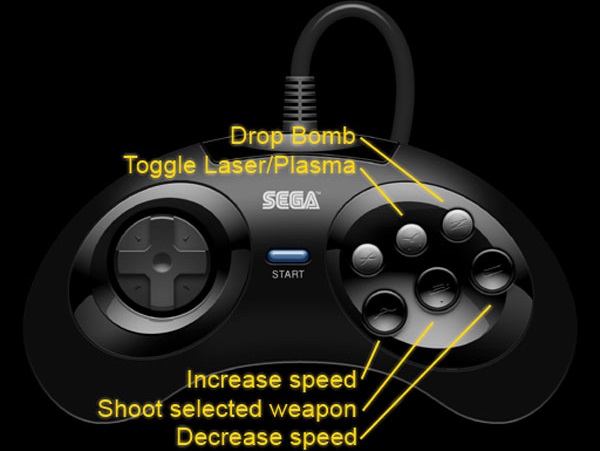
For this manual, I will be drawing on my own experiences as well as the following sources: Revrob’s review, which encouraged me to give the game another chance, and the Darxide Wiki, which I uncovered a few days ago while doing general research on the game. I would encourage you to check out both sites for more in-depth info that we will not be featuring here. I will be using two images from the Darxide Wiki, which I will note in the captions.
The Controls: The above diagram lays everything out pretty well. You’ve got the throttle controls at either side of the B button, which fires the main weapon. They are pretty easy to access, you can easily press either button while never letting go of the fire key. If you are playing this on an emulator I would recommend simulating this layout. The bomb button doesn’t really serve a purpose until mission 5, when the bomb scoop is introduced. The weapon toggle likewise doesn’t serve a purpose until mission six, when the optional plasma gun upgrade is introduced.
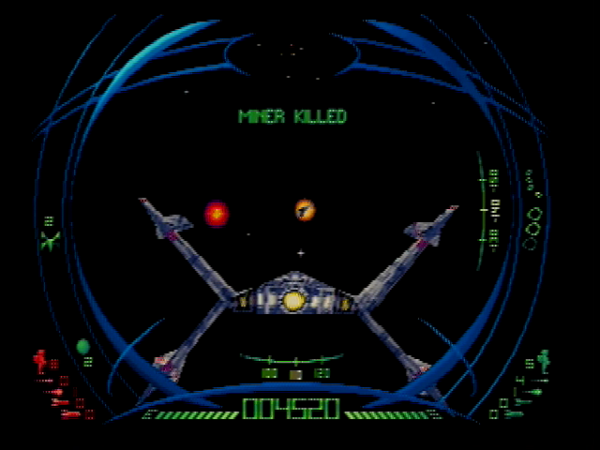
Items and upgrades: Some of the earliest items you will encounter are the blue shield and red energy crystals. These crystals instantly fill up either your shield or energy gauge. Shield crystals can usually be found attached to asteroids, while energy crystals are usually dropped by destroyed targets. Another early item you will encounter is the weapon upgrade. These upgrades can be found either inside asteroids or floating freely in space, and upon collection will instantly fill your energy meter and upgrade one of your weapons.
They appear as long, textured, polygonal pieces roughly the same color as your ship, emphasized by a glowing orange light which makes them fairly easy to spot. The less common engine upgrade boosts your ship’s speed capabilities and comes in the shape of a small, textured metal box. Collecting these upgrades are vital to completing the game, so be sure to be thorough and collect them whenever you spot them on your radar. Once the mission ends, you won’t have another chance to get that particular upgrade.
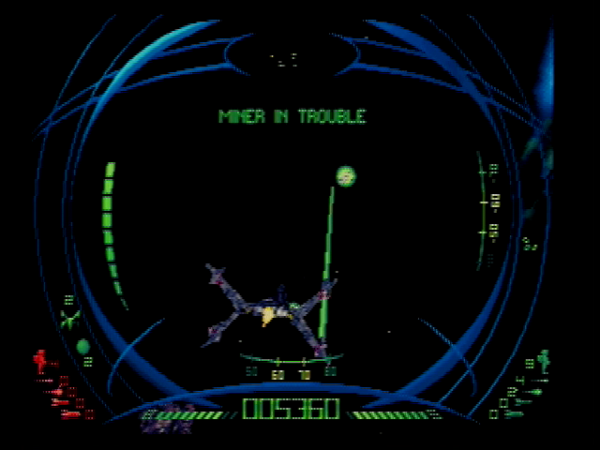
Collecting Miners: At various points throughout the campaign, you will need to rescue miners stranded on asteroids. Miners are very easy to identify, as they are essentially just astronauts attached to a flashing green light. To collect them, you must fly into them while they are floating around in space. You can also sometimes collect them by firing at them, but this method seems to be pretty spotty unless they are still stranded on the asteroid’s surface. The astronauts only have a limited amount of time before they explode, so don’t take too long collecting them.
Scores and Extra Lives: Every destroyed target and collected item adds to your total score. Every 10,000 points earns you an extra life. This means that in addition to destroying all potential targets, it’s also important to try to collect as many items as possible in order to maximize earned points, even when you don’t really need the item. If you have the time, try to collect extra items and miners.
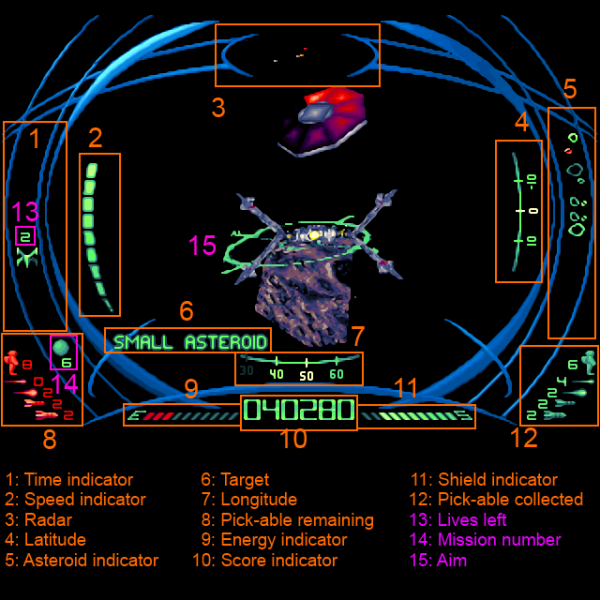
The HUD and Radar: The above image should be pretty self-explanatory, so I’ll stick to just explaining some of the finer aspects of the HUD. The asteroid indicator not only shows how many asteroids are left, but also the number of pieces they are in. The asteroid that you are currently targeting will turn yellow. The timer is made up of two icons: your ship life indicator and mission number indicator. As the timer counts down, the ship icon will slowly move towards the mission icon, until the two icons make contact, spelling the end of the mission. Item 8 indicates how many miners, bombs and weapon upgrades are available to collect in a given mission at a given time, while item 12 indicates how many of these you have collected.
Understanding the radar is key to playing Darxide due to the game’s limited draw distance. Thankfully it’s fairly easy to understand, though in some missions it can become overly cluttered. Use the radar to locate targets beyond the game’s draw distance, then speed towards them to put them in range. Yellow dots indicate asteroids, flashing yellow dots indicate energy crystals, and four yellow dots clustered together indicate a weapon or engine upgrade. Small red dots indicate enemies and flashing red dots indicate bombs. Flashing blue dots indicate shield crystals. Finally, flashing green dots indicate miners and solid green dots indicate friendly ships.
How to play
Darxide is unfortunately an extremely rare and expensive game, region encoded to PAL 32xs only. So not only does a genuine copy typically run for hundreds of dollars, it’s also impossible for American or Japanese gamers to play unless they want to buy a PAL 32X. As someone who’s played the game extensively, I can tell you this: it is not worth the money and hassle to play a genuine version of this game. Thankfully, there are other, much more sensible methods.
I would personally recommend you do what I did: go get yourself a flash cartridge. There are two models available that I can recommend: the more affordable Everdrive MD v3 and the higher end Mega Everdrive. Both are produced by a guy who goes by the name Krikzz, and they are a great way to experience unreleased or otherwise unobtainable games on the hardware they were made for. They are also a great way to play fan hacks and back-ups of games you own without ever needing to take out a cartridge. They run from $78 to over $150, but are well worth it for any Genesis enthusiast.
Another, more affordable method is to buy a reproduction cart, which are occasionally available on eBay for as little as $40. This is not a method I personally approve of, given the effect reproductions can have on the collector’s market. The repros I’ve seen for Darxide are pretty obviously advertised as such, though, and try to mimic the American packaging, so I thought I’d at least mention it here.
Finally, there is the cheapest method: simple PC emulation. This is never a method I care for, because much of the thrill of playing all but the best retro games is playing these games on their original hardware, with the original controller, and experiencing a game the way developers intended. Playing ROMs on a PC just…cheapens the experience in my opinion. If you’re going to play a 3D space shooter on PC, go play X-Wing, Wing Commander, Elite, or Starlancer. Another issue I have with PC emulation is that when people used it to play Darxide it led to many of the above misconceptions that I listed. If you do decide to use this method, though, at least now you have a guide.
In Conclusion…
Darxide isn’t a great game, but it is an interesting piece of gaming history. Any SEGA Genesis enthusiast or hardcore retro gamer really ought to experience it at least once, if only to bear witness to what could have been for SEGA’s ill-fated console.
Ad:
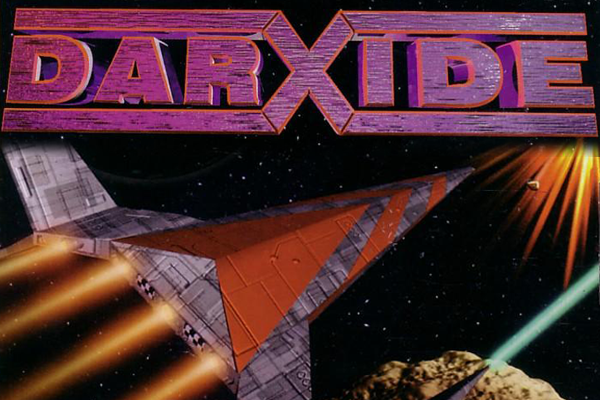
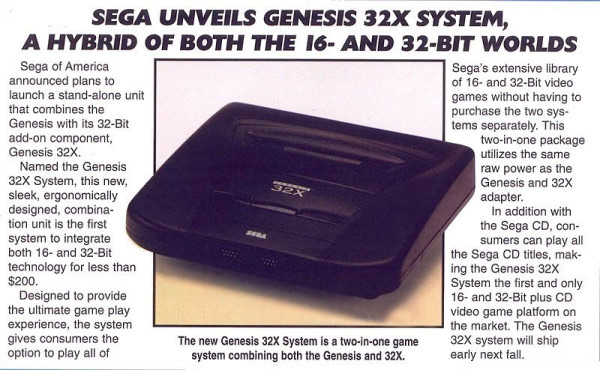
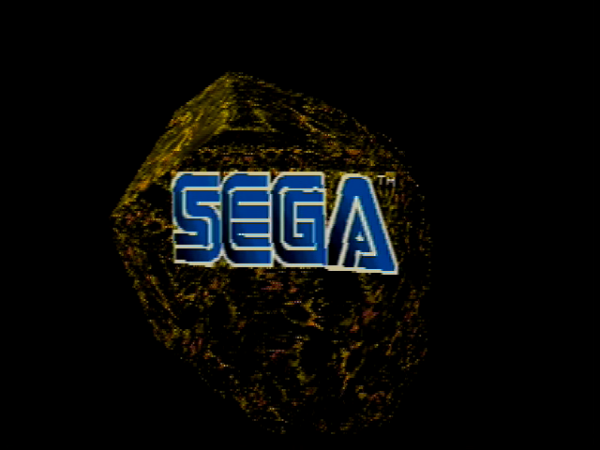
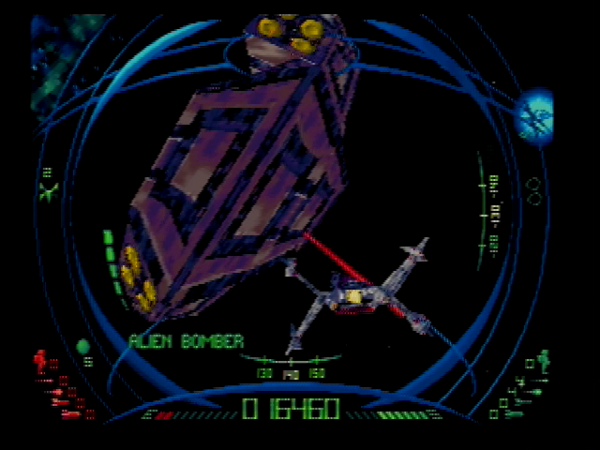
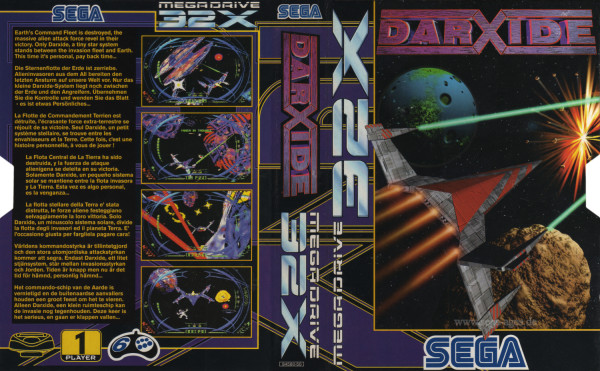
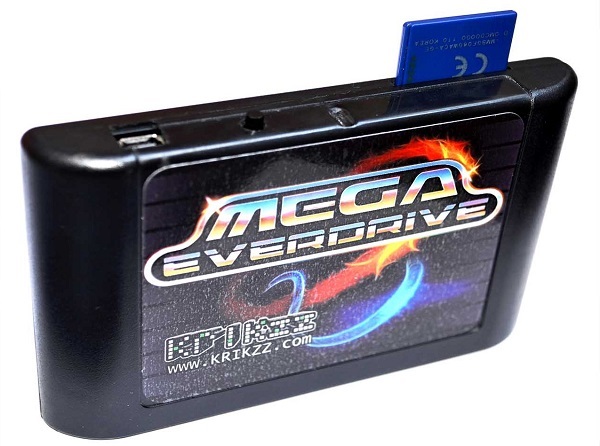
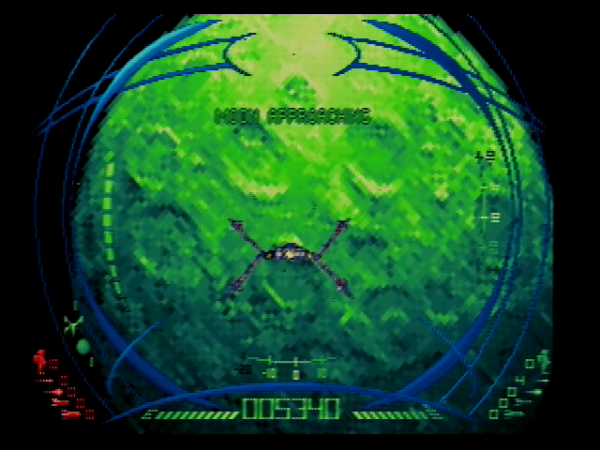


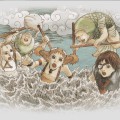
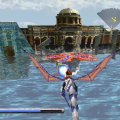

Hey! Its nice to see that somebody else besides me actually visited the wiki! I have kind of abandoned it, but this is an incentive to finish it! Also, its nice to see more people interested by this game because while browsing in internet, everybody say that its a crap, impossible and so, but once you get the trick it is possible to beat it (at least with Kega saving the game at every level).
Also, Im very interested about Everdrive, never heard it before, so I thank you for that.
Is there still not a complete scan of the DarXide manual available online? If not, I’ll look into scanning my own copy of it when I have the time.
please scan it and send it to me if you can, i have personally scanned and uploaded the manual for every japanese 32x game, it would be great to see this one so we can figure out the game
bombman@hotmail.com
Hi Daniel, if by any chance you had scanned your DarXide manual, I would love to get a copy of the file if thats ok! I’m trying to play for making a video episode for my youtube channel and would love to read the manual as part of it. Thanks in advance!
Oh the email would be ericfraga at gmail
I also would need a copy of the manual, please let me know it is the only game I own that would remain without booklet….I can exchange other pdf manuals if interested….hope I’ll get a reply, really count on it…
jabau89@gmail.com
Max
I just bought this game and am not sure if I have a reproduction trying to mimic the original or the real thing. Does anyone have a photo of the inside of the cart?
Hi Sam, am in your shoes… I have one and am not sure if it is genuine. Can you please describe how yours look like from the inside?